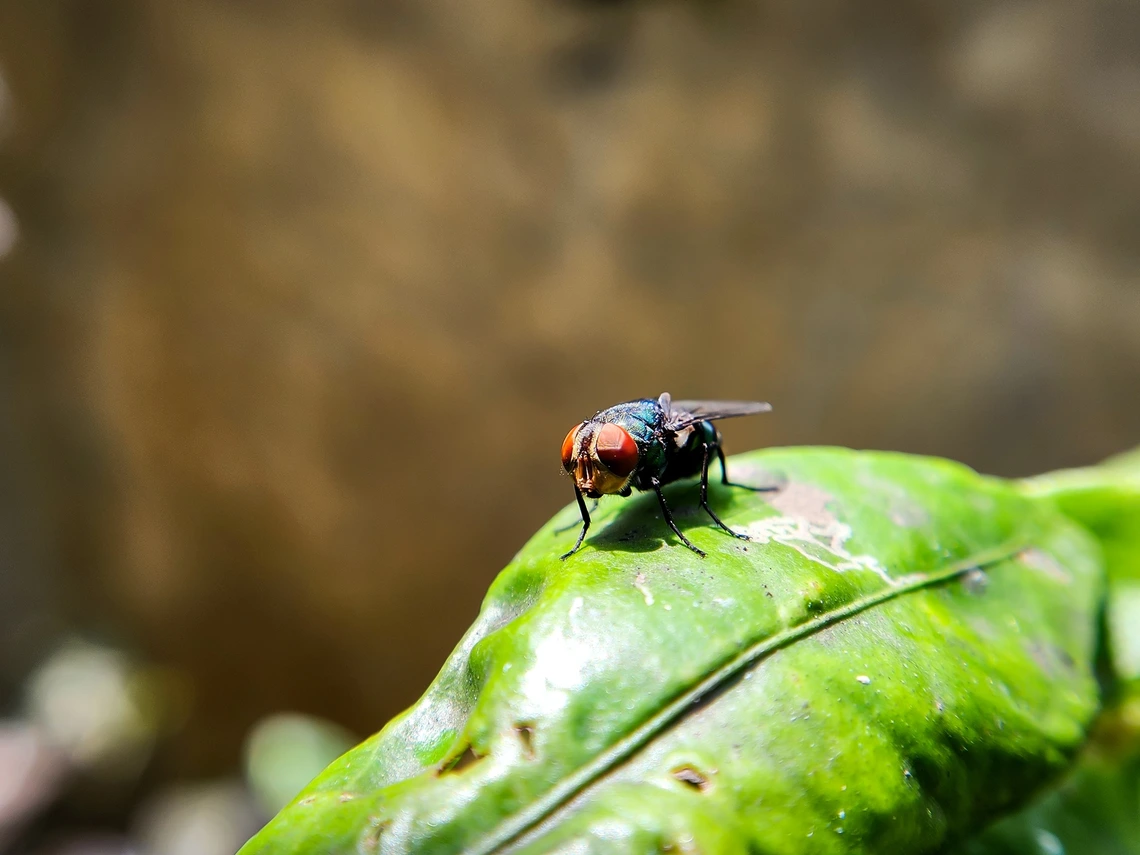U of A joins the fight against New World screwworm outbreak threatening American agriculture

The Arizona Veterinary Diagnostic Laboratory will soon assist the USDA in a national effort against the outbreak of New World screwworm. Last October, the Centers for Disease Control and Prevention reported a resurgence of the fly, which is endemic to Cuba, Haiti, the Dominican Republic and countries across South America.
The University of Arizona will support a national effort against the outbreak of New World screwworm after the Arizona Veterinary Diagnostic Laboratory was named one of three sites in the country selected to aid the U.S. Department of Agriculture by screening for the pest.
Part of the College of Veterinary Medicine and a member of the National Animal Health Laboratory Network, the Arizona Veterinary Diagnostic Laboratory conducts diagnostic testing to detect and manage animal diseases for livestock producers and owners, regulatory agencies and the federal government.
New World screwworm fly, Cochliomyia hominivorax, is endemic to Cuba, Haiti, the Dominican Republic and countries across South America. Named for the way its larvae burrow into living flesh, the fly can cause disease in livestock, wildlife, pets and humans. New World screwworm was eradicated in the United States in the 1960s, in Mexico the following decade and throughout Central America by the early 21st century. For years, the U.S. and Panama have collaborated to manage outbreaks and prevent the pest's northward spread by releasing sterilized insects to gradually eliminate populations.
Additional reading: See how University of Arizona Cooperative Extension is helping Arizona ranchers deal with the threat of New World screwworm.
Last October, the Centers for Disease Control and Prevention reported a resurgence of the fly across Panama, Costa Rica, Nicaragua and Honduras, with cases spreading north since its initial detection. The CDC also confirmed several travel-associated cases of people returning to the U.S. carrying larvae, raising additional concerns about potential reintroduction of the parasite.
In June, the USDA announced its five-part initiative to eradicate New World screwworm, which includes stopping the spread in Mexico, strengthening protections along the southern U.S. border, maximizing domestic readiness to respond to an outbreak, expanding the use of sterile insect techniques to actively suppress the pest and investing in research and innovation to ensure long-term success.
A key step in the mission is screening for the pest at the Arizona Veterinary Diagnostic Laboratory, which specializes in microbiology, cytology, histopathology and molecular diagnostics.
"In addition to providing high-quality diagnostic services, our lab conducts surveillance of important animal diseases that can cause significant damage to the economy," said Dr. Yan Zhang, lab director. "We also investigate zoonotic pathogens and diseases – which is defined as those that infect both humans and animals. These are the kinds of illnesses that, if not treated, can cause significant economic loss due to disease, and even death."
To aid in the effort, the lab will process captured adult flies to determine whether or not they are New World screwworm.
"When we receive a fly, we'll look for very specific morphological features like stripes on the back or specific colorations," said Patrick Maes, the lab's molecular diagnostic scientist, who will soon begin screening flies. "This information allows us to isolate a specific genus. We then rely on our training and our collaborative partners from the University of Arizona, especially from the Insect Collection. At that point, if we think the fly is suspect, it is forwarded on for confirmation."
If the lab suspects a fly is New World screwworm, the sample is sent to the National Veterinary Services Laboratory in Ames, Iowa, for confirmation. That information is then used by the USDA to track the insect.
While there are no subsidies to pay for testing costs outside of the federal initiative, Dr. Emily Janovyak, the lab's assistant director, said it is well worth the small fee for any concerned veterinarian to test for New World screwworm. She added that livestock or pet owners who notice larvae in or around open wounds, or a foul smell from the sore, immediately contact their veterinarian.
Janovyak estimated the screening process would cost a private party roughly $35.
"If cattle are getting eaten up, it is worth the time and money to investigate for this pest," she said. "You will save your friends, your neighbors, your colleagues, your livestock and even possibly your own physical body from being infected by these flies."
Janovyak added that staff at the Arizona Veterinary Diagnostic Laboratory are currently reviewing updated protocols for screening New World screwworm and will work with the USDA in the coming weeks to track the pest's movement.
The lab is accepting suspect specimens from veterinarians and animal owners. Specimens should be preserved in 70% ethanol and must include detailed information about where the specimen was found. More information on the submission process can be found on the lab's website.
To learn more about New world screwworm flies, see this Extension publication. To learn more about the Arizona Livestock Incident Response Team, see the team's web page.





